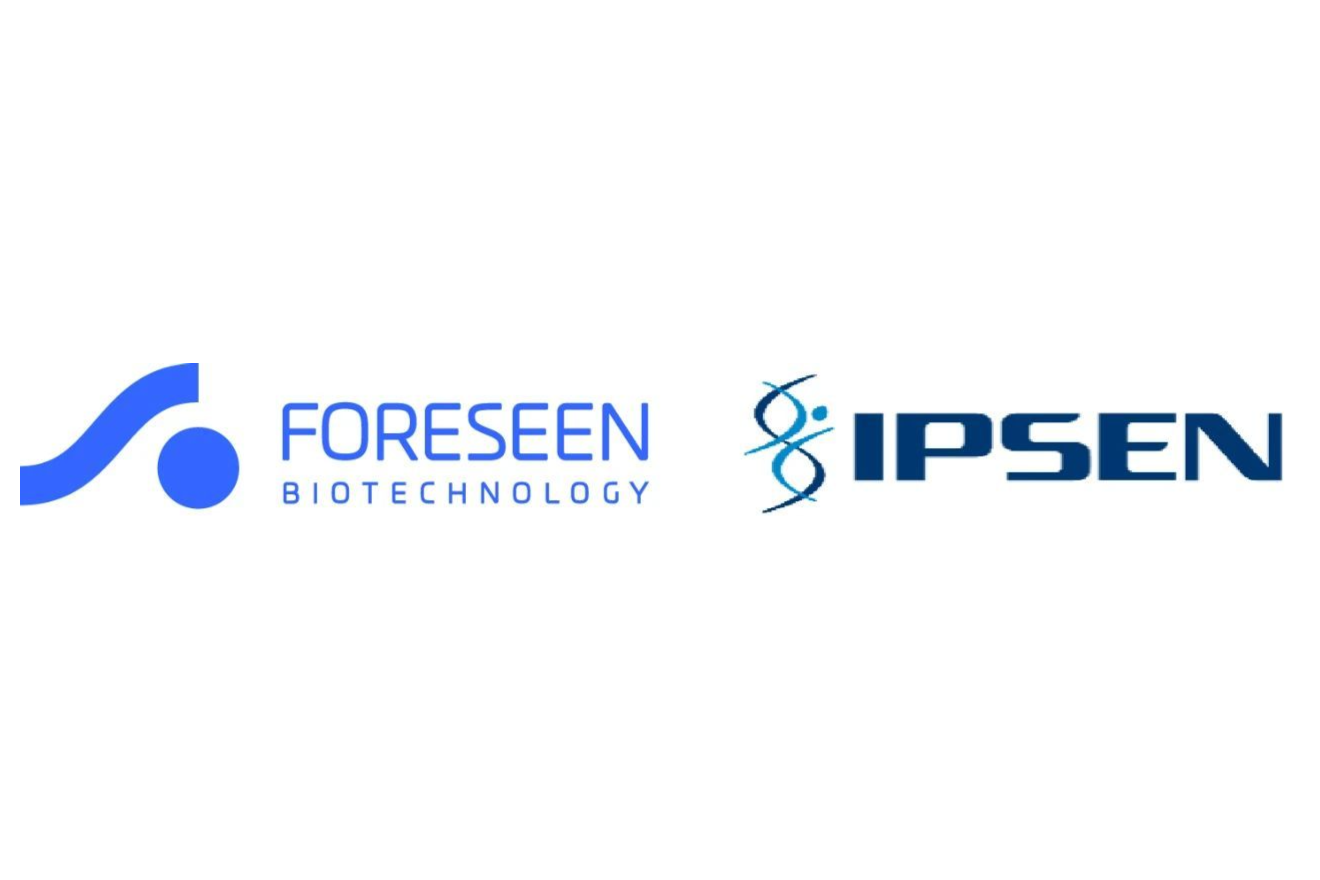







You Only Live Once|细胞领域投稿:liuld@instrument.com.cn


第二十届北京分析测试学术报告会暨展览会(BCEIA 2023) 将于2023年9月6-8日在北京· 中国国际展览中心(顺义馆)召开。作为中国分析与生化技术交流与展示的“峰会”,BCEIA2023将营造浓郁的学术会展氛围,同期举办大会报告、分会报告、高峰论坛、同期会议、墙报展等精彩学术活动,面向世界科技最前沿,邀请国内外顶尖学者分享最具前瞻性的研究进展。
2023年9月7-8日,BCEIA2023学术报告会——微全分析分会将在学术会议区E-306会议室举行,聚焦“面向全社会的微型化分析技术”主题,围绕微流控分析(Microfluidic Analysis)、微纳分析技术(Techniques for Micro and Nano Analysis)、样品微处理(Micro Sampling Process)、微单体分析(Single Entity Analysis)、新原理新技术新方法(New Principles, Technologies and Methods)、新仪器(New Instruments)等几个专题方向,邀请到24位国内外微全分析领域资深科学家及青年才俊带来精彩报告。
最新嘉宾阵容公布如下:
召集人简介
林金明,博士,清华大学化学系教授,博士生导师。1992-2002年在日本东京都立大学学习和工作。1997年获得东京都立大学博士学位,同年留校任教。2001年入选中国科学院“百人计划”并获得国家杰出青年科学基金的资助,同年受聘中国科学院生态环境研究中心研究员,2004年入选清华大学“百人计划”,受聘清华大学化学系教授,2008年受聘教育部长江学者特聘教授,2014年入选英国皇家化学会会士。主要从事:1)微流控芯片质谱联用细胞分析方法研究;2)空气负离子制备方法及其对促进健康作用的机理研究;3)超微弱化学发光与免疫分析研究。出版《化学发光基础理论与应用》、《化学发光免疫分析》、《环境、健康与负氧离子》、《Cell Analysis on Microfluidics》及中文版《微流控芯片细胞分析》、《Microfluidics for Single-Cell Analysis》等专著七部、教科书《基础分析化学实验》和《微流控细胞分析》各一部,发表研究论文400多篇,申请发明专利51项,并且有多项专利转让企业进行产业化。目前担任中国分析测试协会常务理事,中国化学会分析化学学科副主任委员,中国药学会药物分析专业委员会副主任委员。Trends in Analytical Chemistry责任编辑,J. Pharm. Anal.副主编, Chemosensors副主编、Chinese Chemical Letters副主编,《分析试验室》副主编,以及Talanta等10多种国内外学术期刊编委。
特邀报告人

报告摘要
The efficient recognition of circulating tumor cells (CTCs) with aptamer-probe has numerous benefits. We engineered a superefficient biomimetic single-CTCs recognition platform by conjugating dual-aptamer onto AuNPs to form a nanoprobe for selective binding biomarker proteins PTK7 & EpCAM on CTCs surface. CTCs are sorted on a specially designed multifunctional microfluidic configuration, and biomarkers in a single CTC are analyzed with ICP-MS by measuring 197Au isotope. This strategy ensures the manipulation and detection of a single CTC in 100 μL of human blood within 1 h.
2D cytometry/ICPMS system was developed for evaluating drug uptake and induced protein expression in individual cells. The nanoprobes conjugating 6-FAM-Sgc8 aptamers on a single AuNP were engineered to selectively bind PTK7 on target cells. PTK7 expression induced by OXA uptake was assayed with LIF,while ICP-MS measurement of 195Pt and 197Au revealed OXA uptake and AuNPs conjugation in single cells. Using a machine learning algorithm to cell-lines signature based on agent uptake and marker expression, it enables simultaneous online profiling PTK7 response to OXA at single-cell resolution from tumor cell lines and breast cancer patients.
专家简介
Professor Jian-Hua Wang was born in 1962 in Shandong, China. He obtained his B.Sc from Department of Chemistry, Nankai University, and M.Sc from Jilin University, China. He was awarded a PhD degree by Technical University of Denmark. He has been an Associate Editor for TALANTA since Dec. 2004. He is currently serving as the co-editor in chief for Talanta Open. He was a member of International Advisory Board for Journal of Analytical Atomic Spectrometry (2007-2010).
His current research interest is focused on the exploitation of flow analysis protocols and hyphenation techniques, isolation of trace level of analytes (metals and biomacromolecules) from complex sample matrices and life science analysis, mainly focused on single cell analysis.

报告摘要
Surface-enhanced Raman scattering (SERS)-based assays have recently been developed to overcome the low detection sensitivity of SARS-CoV-2. In this study, we developed an SERS-based microdroplet sensor to dramatically improve the limit of detection (LoD) and reproducibility of SARS-CoV-2 detection. Raman signals were measured for SERS nanotags in 140 droplets as they passed through a laser focal volume fixed at the center of the channel for 15 seconds. In this case, the detection sensitivity has been significantly improved due to the ensemble averaging effects, as the signals were measured for SERS nanotags in multiple droplets. Moreover, the total assay time decreased from 30 to 10 minutes. A clinical test was conducted on patient samples to evaluate the clinical efficacy of the SERS-based microdroplet sensor. The assay results correlated well with those obtained using the RT-PCR method. The proposed SERS-based microdroplet sensor is expected to be utilized as a new point-of-care diagnostic platform for the quick and accurate detection of SARS-CoV-2 in the field.
专家简介
Jaebum Choo is a Professor in the Department of Chemistry at Chung-Ang University in South Korea. He obtained his PhD from Texas A&M University in 1994. From 1995 to 2019, he served as a faculty member at Hanyang University. In 2015, he was appointed as a Baik Nam Distinguished Professor, recognizing his outstanding academic accomplishments. In 2016, he served as the President of the Korea Biochip Society, and in 2020, he was the Chair of the Analytical Chemistry Division of the Korean Chemical Society. Currently, Professor Choo holds the position of Vice-President for Research at Chung-Ang University and serves as the Director of the "Center for Nanophotonics-based Biomedical Diagnostics Research Center (ERC)," which is supported by the National Research Foundation of Korea. His primary research areas include SERS, biosensors, micro-devices, and molecular spectroscopy. His ongoing research programs focus on the development of highly sensitive optical nano-sensor systems for rapid and precise in vitro diagnostics of infectious diseases. Throughout his career, Professor Choo has delivered over 150 invited lectures in the USA, Europe, and Asia. He has published more than 300 research papers in peer-reviewed journals and has contributed to eight book chapters.

专家简介
黄岩谊,北京大学化学学院教授,北京未来基因诊断高精尖创新中心、北京大学生物医学前沿创新中心、北大-清华生命科学联合中心研究员;兼任深圳湾实验室资深研究员。曾获得国家自然基金委优秀青年基金、杰出青年基金等资助。主要从事微量核酸分析研究,集中工作在测序技术、单细胞分析和微流控技术等方向。

报告摘要
器官芯片(Organ on a chip)是微流控技术与器官组织工程技术交叉融合发展的新兴技术。类器官(organoid)基于干细胞三维培养、分化获得的细胞三维组装体,包含其代表器官的一些关键特性,与对应的器官拥有类似的空间组织并能够重现对应器官的部分功能。类器官芯片(Organoid on a chip)是微流控技术与类器官技术交叉融合发展的新兴技术。器官芯片或类器官芯片模型有利于尽可能地接近和模拟人体实际生理病理条件下的微环境,应用于药物有效性和安全性评价,可能会以令人难以想象的幅度加快新药发现的周期,降低新药筛选失败的风险,给新药开发带来一次革命。
专家简介
清华大学长聘教授,长江学者特聘教授,兼任中国医药生物技术协会药物分析技术分会秘书长,中国分析测试协会青委会副主任委员,中国药理学会分析药理学专委会常务委员,北京理化分析测试技术学会副理事长兼青委会理事长等。研究方向聚焦于类器官与器官芯片、单细胞亚细胞分析、多组学分析及其在药学与中医药现代化研究中的应用。在包括Lab Chip, Anal. Chem., Nat. Protoc., Adv. Mater., Cell,PNAS等学术期刊发表SCI论文250余篇,获授权发明专利20余项,合作获得国家科技进步二等奖3项。

报告摘要
单颗粒光谱分析为精准实现特异性分析提供了新手段,具有灵敏度高、特异性好的有点。本课题组近年来以不同材质的单颗粒为基础,在研究其共振光散射光谱特性的基础上,并结合人工智能技术,实现了一系列有机光化学反应机制探讨,提出了不同于整体分析完全不一样的反应机制。
专家简介
黄承志,西南大学药物分析学/分析化学教授,博士生导师。先后获得西南师范大学、北京师范大学和北京大学的学、硕、博士学位,日立制作所中央研究所、渥太华大学和东京大学博士后。主持了包括国家杰出青年科学基金、国家自然科学基金重点及面上、973课题项目30多项,在JACS、Angew Chem、ACS Nano等刊物上发表论文500余篇,研究方向为共振光谱学与光谱分析。获教育部和重庆市自然科学一等奖各一项,获新世纪百千万人才工程第一层次、重庆巴渝学者、重庆优秀科学家等荣誉称号。

报告摘要
Microfluidic devices are widely used for analytical applications such as chemistry, biochemistry, and food science, and highly sensitive analytical methods have been developed. However, the macroworld-to-microworld interface is still challenging. Usually, the sample volume can be mL scale in conventional sampling methods, while it is difficult to treat the mL samples due to the nL to mL scale volume of the microchannels. If only the mL sample can be used for the analysis on microfluidic devices, the sample loss cancels the high sensitivity of the microfluidic devices. Therefore, the sampling interface is quite important to fully utilize the merits of microfluidic devices. Here, we propose a macroworld-to-microworld interface by creating a room-temperature quantitative concentration device. Room temperature operation is also an important condition to treat biological samples. Millimeter-to-micrometer channels are formed in a conventional microtube using a 3D fabrication, and air cyclone flow is used for room-temperature evaporation.
专家简介
Kazuma Mawatari is a professor of Graduate School of Information, Production and Systems at Waseda University. He has successful achievements in microfluidics and nanofluidics. Recently, he realized to integrate chemical processes in nano space by developing original methodologies as ultrasensitive detection, glass substrate low-temperature bonding, surface modification, etc. And ultrasensitive analytical devices were realized. For example, in single-cell analysis, he allowed an fL living cell sampling method and fL single molecule immunoassay (ELISA). He published 128 original papers and had 87 invited talks. He is currently an executive technical program committee (ETPC) member in uTAS, which is the largest international conference in micro/nanofluidics.

报告摘要
Deciphering the spatial organization and molecular features of cells is crucial for comprehending various pathophysiological processes such as embryogenesis, neuroscience, and disease progression. Spatial resolved transcriptomics (SRT) technologies are powerful tools for delineating spatial gene expression patterns within tissues, revealing the composition of cell types, their spatial arrangements, and interactions. Recently, our team has developed Decoder-seq, a dendrimeric DNA coordinate barcoding design for spatial RNA sequencing. Decoder-seq combines dendrimeric nano-substrates with microfluidic coordinate barcoding to create high-density spatial DNA arrays with deterministic combinatorial barcodes, offering resolution flexibility and cost-effectiveness. Decoder-seq exhibits high RNA capture efficiency, approximately 68.9% of in situ sequencing, and enhances the detection of lowly expressed genes by approximately five-fold compared to 10× Visium. By applying Decoder-seq, we have visualized a spatial single-cell atlas of the mouse hippocampus at near-cellular resolution (15 μm) and identified mRNAs enriched in dendrites. When applied to renal cancers, Decoder-seq has unraveled the heterogeneous tumor microenvironment of two subtypes, revealing spatially gradient-expressed genes that hold potential for predicting tumor prognosis and progression. With its high sensitivity and near-single-cell resolution, Decoder-seq represents a powerful technology for investigating tissue-wide changes in molecular dynamics, signaling pathways, microenvironments, and cell-cell interactions, thereby facilitating the study of disease mechanisms.
专家简介
杨朝勇,国家杰出青年科学基金获得者、上海交通大学医学院分子研究员、厦门大学特聘教授、上海交通大学医学院分子医学研究院副院长、谱学分析与仪器教育部重点实验室副主任、中国化学会化学生物学专业委员会副主任、中国化学会分子医学专业委员会秘书长、英国皇家化学会Fellow、Analytical Chemistry副主编。主要研究领域为生物分析化学,在微流控、液体活检、单细胞测序、空间组学、体外诊断仪器与试剂、肠道菌群成像等方向取得了创新性的成果。在Nature Commun.、Sci. Adv.、PNAS、JACS、Angew. Chem. Int. Ed.等学术刊物上发表论文300余篇,论文被引超过20000次,H index=77,获授权发明专利65项,合著3本专业书籍。

报告摘要
In a typical drug screening test, single drugs or drug combinations with different types and concentrations need to be delivered to cell culture vessels. Here we developed a high-throughput drug delivery system using a disposable probe array with preloaded dried drugs for drug screening of tumor cells. A slot was fabricated at the tip of each probe in the probe array, where the drug solutions were quantitatively loaded, dried and preserved. With the probes carrying dried drugs, fast and efficient drug delivery can be easily realized for high-throughput cell-based drug screening.
专家简介
方群,浙江大学求是特聘教授,博士生导师,化学系微分析系统研究所所长,浙江大学杭州国际科创中心分子智造研究所所长,国家杰出青年基金获得者。自1998年开始从事微流控芯片分析的研究工作。目前研究方向包括微流控液滴分析和筛选,微流控液相色谱、质谱和毛细管电泳分析,微型化分析系统研制,人工智能+微流控系统,以及微流控系统在单细胞多组学分析、微量生化分析、药物筛选和现场分析中的应用。发表研究论文140余篇。在微流控分析领域有32项国家发明专利获得授权。曾主持承担国家基金委重大项目课题、国家杰出青年基金、国家基金重点项目、科学仪器研制专项和面上项目,以及国家科技部重点研发计划项目课题等科研项目。

报告摘要
Although light sheet-based super-resolution microscopy is an excellent detection technique for biological samples because of minimal photodamage, uneven light paths due to solid-angle illumination limits it, resulting in an optical illusion. Furthermore, the optical illusion limits the observations of individual molecules in diffraction. In this study, an integrated multifunctional super-resolution microscopy (iMSRM) combined with differential interference contrast, total internal reflection, epifluorescence, super-resolution radial fluctuation-stream module, and wavelength-dependent light sheet was developed to simultaneously realize the multi-dimensional information [three coordinates (x, y, z) + rotational dynamics (azimuth and elevation angles) + transport speed tracking] of anisotropic nanoparticles and the super-localization of various nanoparticles in single living cells. The developed technique can be considered useful for the real-time monitoring of intracellular transport at various regions in single living cells, as well as for six-dimensional vector-valued non-fluorescence super-resolution imaging and tracking.
In addition, the method demonstrated the in-depth four-dimensional observation of samples at an optimum angle that can be used in various applications, such as single-molecule and subcellular organelle observations in single cells at subdiffraction limit resolutions that describe the scenario of nature.
专家简介
Professor Kang received his B.S. and M.S. degrees in Chemistry from Kyung Hee University, Korea, in 1987 and 1989, respectively. Dr. Kang worked as a senior researcher and director of research at Hanil Pharmaceutical Co. from 1989 to 1997. He received his Ph.D. degree in Chemistry from Seoul National University, Korea, in 1998. He was a postdoctoral research associate scholar at Iowa State University and Ames Laboratory-U.S. Department of Energy, with Dr. Edward S. Yeung from 1998 to 2000. He then served as a senior researcher at Samsung Advanced Institute of Science and Technology (SAIT) from 2000 to 2002 and then as a professor of Chemistry at Chonbuk National University, Korea, from 2002 to 2010. He was a visiting (exchange) professor at Iowa State University and Ames Laboratory, U.S. Department of Energy from 2008 to 2010 and at Georgia State University from 2016 to 2017 in USA. He was a Head of Department of Applied Chemistry, Kyung Hee University (2012~2014), a Vice President and President at the Analytical Chemistry Division of Korean Chemical Society (2020.01~2012.12).
He is currently a full professor at the Department of Applied Chemistry and a director of the Institute of Natural Sciences, Kyung Hee University. He is also a review board of National Research Foundation of Korea (NRF), a director of Korea Biochip Society, an editor board of International Journal of Advanced Chemical Technology (IJACT) and Chinese Chemistry Letter (CCL), Sensors, and Biosensors. He is the author of ~175 SCI papers and 20 patents. His current research interests include developments in various analytical systems and methods based on micro-/nano-separation, single-molecule detection-based super-resolution microscopy, nanobio-sensor and chip, and various nanobio-fusion technologies.

报告摘要
微加工和高分子等化学与工程发展催生了蓬勃发展的微流控技术,为生物医学检测与体外诊断带来了高通量、低消耗、便携化等优势。对微尺度水/有机溶剂的精确调控,还可以用于针对疾病诊疗的纳米颗粒制备。 对液态金属精确调控可以制备液态金属-弹性高分子材料制备可以弯折拉伸的柔性电子系统,发展了与人体脏器相容的、可以粘贴到人体内外的柔性可降解电子电路系统。这些柔性电路系统可以在人体表面以及器官表面贴附来进行长期的生理电信号与生物标志物检测。此外这些柔性电路系统还可以实现一些治疗从而与前述的检测功能相结合构成新的诊疗一体化的方法。 最近我们制备的“电子血管”及其相关器件可以进行在体的可逆电穿孔以实现高度靶向的局部基因治疗,还可以进行不可逆电穿孔从而在体杀死循环肿瘤细胞。
专家简介
蒋兴宇1999年获芝加哥大学学士,2004年获哈佛大学博士,2005年开始在中科院工作,2018 年调入南方科技大学任讲席教授,主持过的项目包括国家杰出青年科学基金、中组部万人计划、科技部重点研发计划、基金委重点项目等。是英国皇家化学会(RSC)和美国医学与生物工程学院(AIMBE)会士,曾获腾讯“科学探索奖”等。发表论文300多篇。研究方向主要包括:微流控、柔性生物电子和纳米生物医学。

报告摘要
细胞微环境是细胞赖以生存的基础,对细胞的增殖、迁移、分化等诸多行为和功能具有重要的调控作用,在生物体内,细胞生活在动态的复杂微环境中,细胞通过感知周围微环境的变化而调节自身行为和功能,从而影响细胞的形态、基因表达、蛋白质水平和定位。我们发展了一系列微流控单细胞单分子测量技术,实现了对胞内分子的时空动态检测,研究了在微纳限域条件下细胞的运动、形变及其关键生物分子的高灵敏度测量。
专家简介
刘宝红,复旦大学化学系教授,聚合物分子工程国家重点实验室、创新科学仪器教育部工程中心PI。1991年毕业于复旦大学化学系,1997年获得复旦大学博士学位。主要研究方向包括微纳流控分析、生物传感与单分子检测等。2009年获得国家自然科学基金委杰出青年基金,曾获上海市优秀学科带头人、曙光学者、启明星计划等,主持完成国家重点研发计划等,发表SCI论文两百余篇,被引用九千多次。Analyst副主编,入选英国皇家化学会会士。

报告摘要
The impacts of infectious diseases such as COVID-19 are far-reaching; they often cause tremendous global health concerns and economic losses. There is a great need for simple and low-cost methods for rapid point-of-care detection of infectious diseases in low-resource settings that lack complicated and costly diagnostic tools. Thus, we developed different microfluidic platforms to address the increasing demand. Considering each device substrate has its own advantages and disadvantages, we have developed different low-cost paper/polymer hybrid microfluidic systems that take advantage of both polymer and paper substrates for rapid and sensitive disease diagnosis, especially in low-resource settings. For instance, paper was used in a PDMS/ paper hybrid microfluidic system integrated with loop-mediated DNA isothermal amplification (LAMP) for rapid and sensitive multiplexed infectious disease diagnosis, including meningitis (a global disease with high morbidity and mortality) and pertussis. Although this hybrid system does not require expensive instruments, its sensitivity is even higher than conventional real-time quantitative PCR.
专家简介
XiuJun (James) Li, Ph.D., is a Full Professor with early tenure in the Department of Chemistry and Biochemistry at the University of Texas at El Paso (UTEP), USA. He is also the Director of Forensic Science Program at UTEP. After he obtained his Ph.D. degree from Simon Fraser University (SFU) in Canada in 2008, he pursued his postdoctoral research with Prof. Richard Mathies at University of California Berkeley and Prof. George Whitesides at Harvard University, while holding a Postdoctoral Fellowship from Natural Sciences and Engineering Research Council (NSERC) of Canada. Dr. Li’s current research interest is centered on the development of innovative microfluidic lab-on-a-chip and nanotechnology for bioanalysis, biomaterial, biomedical engineering, and environmental applications, including but not limited to low-cost diagnosis, pathogen detection, nano-biosensing, genetic analysis, 3D cell culture, tissue engineering, and single-cell analysis. His lab has extensive experience in point-of-care detection. He pioneered the novel concept of paper/polymer hybrid microfluidic devices; he, for the first time, developed photothermal biosensors for low-cost quantitative analysis using a common thermometer.
Dr. Li has coauthored more than 117 journal publications and 23 patents, including three books from Elsevier on microfluidic devices for biomedical applications. He is an Editorial Board member of multiple journals including Microsystems & Nanoengineering and Scientific Reports from the Nature Publishing Group, Micromachines, Future Science OA, Journal of Analysis and Testing, etc, and an Advisory Board member of Lab on a Chip and Analyst. He is the recipient of the “Bioanalysis New Investigator Award” in 2014, UT STARS Award in 2012, NSERC Postdoctoral Fellow Award in 2009, Chinese Government Award for Outstanding Self-financed Graduate Student Abroad (2004), Outstanding Faculty Dissertation Research Mentoring Award (2016 & 2018, twice), NIH BUILDING Scholar Mentoring Award for Excellence in Student Research Mentoring in 2017, and so on.

报告摘要
Recent studies implicate the potential of site-specific glycans in tumor diagnosis, yet it is challenging to perform large-scale site-specific glycan analysis with high reproducibility and sensitivity. Here we present a highly robust N-glycoproteomics (HRN) platform for site-specific glycan biomarker discovery. In the HRN platform, intact N-glycopeptides of biological samples were enriched through an automated hydrophilic interaction chromatography (HILIC) method and then analyzed by a microflow LC-MS/MS system, followed by quantitative glycoproteome characterization using the Glyco-Decipher software. We utilized the HRN platform to analyze 200 individual specimens from two cohorts. We detected 21,711 unique site-specific glycans, corresponding to 1,357 N-glycans, 1,350 N-glycosites and 971 glycoproteins, resulting in deep coverage of serum glycoproteome. By employing machine learning, we identified five site-specific glycans as promising candidates in detecting early-stage gastric cancer(GC), in which a branched tetra-antennary site-specific glycan capping with sialyl-Lewis antigen demonstrated the best performance and significantly outperformed serum carcinoembryonic antigen (CEA). Further combination of the five candidates offered improved diagnostic performance. Our study demonstrated that robust and sensitive glycoproteomics technology is powerful in analyzing site-specific glycans from large-scale clinical samples. It successfully insights the site-specific glycan changes in GC and provides candidate glycosylated biomarkers for early detection of GC.
专家简介
Dr. Mingliang Ye obtained his Ph D under the supervision of Prof. Hanfa Zou at the Dalian Institute of Chemical Physics (DICP), Chinese Academy of Science (CAS), in 2001, and worked as postdoctoral fellows under supervision of Prof. Norman Dovichi at the University of Washington, USA (2001.11-2003.3), and Prof. Reudi Aebersold at the Institute for System Biology, USA (2003.3-2004.10). In November of 2004, he came back to China and now he is a full professor in DICP and deputy director of CAS Key Laboratory of Separation Science for Analytical Chemistry. He published more than 200 peer-reviewed papers in SCI journals. He won Excellent Young Scientist Funding awarded by the National Natural Science Foundation of China in 2015. Currently his research interesting is mainly focused on developing new methods for the analysis of protein post-translational modifications and for the identification of target proteins of diverse ligands. For the analysis of protein gycosylation, his team aims to develop a robust and sensitive platform to analyze site-specific glycoforms at proteomics scale, which is achieved by developing and integrating the new methods for specific enrichment, LC-MS/MS analysis and spectra interpretation of glycopeptides.

报告摘要
Microplastics (MPs) widely present in rivers and oceans become a worldwide environmental concern, so analyses of MPs in water are in demand for assessment of risk. In this study, analytical schemes based on Raman and NIR spectroscopy with employing perfluorohexane (PFH) as a MPs-capturing medium were demonstrated. PFH is able to extract MPs in water due to its strong hydrophobicity. First, an on-line MPs-capturing configuration was devised for quantification using Raman spectroscopy and polyethylene (PE) particles were adopted as model MPs. Samples of dispersed PE particles in water were prepared and the captured PE particle in PFH droplets were directly detected by a wide-area-illumination Raman measurement. Second, since PFH barely absorbs NIR radiation, NIR measurement was feasible and thereby accomplished. A reflective metal disk and a PTFE disk were used to increase the sensitivity and reproducibility. Third, a nickel foam (NF) was additionally proposed as a MPs-capturing medium and the captured MPs in the NF was measured by the Raman measurement. In final, the merits of each scheme were comparatively discussed.
专家简介
Hoeil Chung is a Professor in the Department of Chemistry in Hanyang University, Seoul, Korea. He obtained his B.S. from Hanyang University in 1989 and Ph.D. from the University of Iowa in 1994. Right after obtaining his Ph.D., he joined SK Energy in Korea as a research scientist and was involved in projects for developing diverse NIR spectroscopic on-line monitoring systems. In 2002, he joined Hanyang University and started his academic research in the areas of transmission/wide area coverage Raman spectroscopy for non-destructive analysis, reproducible and reusable SERS schemes to detect disease biomarkers, electrochemical synthesis of metal–alloy nanostructures and development of advanced chemometric algorithms. He has published more than 200 papers in peer-reviewed journals.

报告摘要
细胞外囊泡(extracellular vesicle, EV)是细胞分泌的微纳尺度脂质囊泡,携带来自母体细胞的核酸、蛋白质等生物分子信息,是介导细胞间通讯的关键信使。EV蛋白、核酸分子信息的精准分析,可以从多维度解析疾病机制,在基础研究及临床应用研究领域具有重要意义。为了解决血清样本中EV分离富集困难、检测灵敏度低的问题,我们发展了微流控热泳适体传感器,利用微尺度热泳尺寸选择性地富集囊泡,有效放大与囊泡共轭的7种核酸适体的荧光信号,获得囊泡表面蛋白表达图谱。进一步结合机器学习算法,将囊泡分子信息用于6种高发恶性肿瘤的早期筛查、自动癌症分类以及前列腺癌复发监控。结合微流控热泳的高效富集与球形核酸的特异性识别,实现了EV miRNA的高灵敏原位检测,灵敏度0.36 fM,接近qRT-PCR。该方法无需囊泡裂解、核酸提取等前处理,仅需微量血清即可获得外泌体miRNA的表达图谱,并用于乳腺癌早期诊断。发展了基于核酸适体的EV表面DNA逻辑运算方法,实现了EV表面蛋白共表达精准分析。针对乳腺癌EV表面EpCAM、HER2的特异性表达,设计了两条单链DNA探针(含有核酸适体序列、间隔序列和引发序列);两条探针同时识别靶标蛋白后,与连接序列互补配对形成联合立足,从而引发杂交链式反应,实现AND运算并产生荧光信号。基于该方法获得单EV表面EpCAM和HER2共表达水平,可用于乳腺癌HER2分子分型。
专家简介
孙佳姝,国家纳米科学中心研究员,中国科学院特聘研究员。主要研究方向为微流控生物传感与纳米生物医学研究。现任北京市纳米生物医学检测工程技术研究中心主任。曾获国家杰出青年科学基金获得者(2020年),国家优秀青年科学基金获得者(2016年)等。

报告摘要
数字微流控是基于电润湿现象的一种微流控技术,电子控制的引入使得它可以摆脱对微泵和阀门的依赖,并且可以对单个液滴的进行精确独立控制,成为便携式医疗设备的最佳平台。这篇报告中,我们将介绍本组最新的数字微流控技术的研发进展,及其在精准医疗方面的应用,单细胞药物筛选、电信号控制芯片上药物添加和药物浓度调节、单药和多药结合药物筛选等。另外我们还搭建了一个药物筛选的数字微流控原型机,并以小鼠为模型检验了此技术用于原代肿瘤细胞的药物筛选和精准医疗,这些都为后期开发自动化的癌症精准医疗数字微流控设备铺平了道路。
专家简介
贾艳伟,澳门大学模拟与混合信号超大规模集成电路国家重点实验室副教授、博导,曾获澳门科技发展基金颁发的技术发明奖三等奖、第九届国际交叉学科光流体会议创新奖、国际生物结晶组织颁发创新奖、以及新加坡教育部颁发杰出导师奖。研究方向为数字微流控技术及其在生物医学中的应用,在JACS, Nature Communications, ACS Nano, ACS Sensors, Biosensors & Bioelectronics, Lab Chip, and Trends in Analytical Chemistry等期刊发表论文近50篇。

报告摘要
纳流控技术是研究和应用纳米通道中流体特性的一个新兴的领域。由于纳流控技术具有潜力解决精确地操纵、分离、检测单分子的挑战,从而达到在单分子水平上认识物质传递现象、化学反应、生物过程、以及生命现象本质,因此在化学、生物、材料、医学等领域受到广泛关注。另外,有效地利用纳米通道的各种特异性质和物理效应,可能会带来一些划时代的应用。比如,建造超高速化学反应器、超高效率能量转换器、以及超高灵敏度的分析装置等。然而,与其蓬勃发展的“兄弟”微流控相比,纳流控还处在“婴儿”时期。由于纳米通道超微小且密闭,在其内部集成功能性部件在技术上极具挑战。这导致对纳米通道内的溶液、流体、界面、物质传递、化学反应、能量转换等进行控制困难重重。纳流控的“控”的一面缺失,极大地阻碍着整个纳流控领域向着发挥和实现其潜力和划时代应用前进的步伐。为解决上述关键课题和挑战,本团队以独特的“Nano-in-Nano集成”方法论,通过在纳米通道中构筑各种功能部件,建立了一系列面向纳流控的纳米加工、流体控制、功能集成、分子捕捉及检测等的方法和技术,初步实现了纳流控的“控”的精髓,为纳流控与其他学科的融合开拓了道路。在这次报告中,我将介绍利用崭新的纳流控芯片技术来引领和开创分析化学未来的相关进展。
专家简介
许岩,现供职于大阪公立大学化学工程系,是该校纳流控科学与技术实验室的首席科学家。曾兼任日本科学技术振兴机构(JST)PRESTO先驱研究员。本科毕业于大连理工大学(2001年),在中国科学院大连化学物理研究所取得硕士学位后(2004年),在东京大学取得博士学位(2007年)。其团队的研究领域涉及纳流控基础和纳流控技术在化学、生物学、医学以及材料科学的应用,并致力于研发面向单细胞组学,单分子化学,生物材料以及纳米医学的纳流控新方法和新技术。以项目负责人的身份主持承担日本文部科学省MEXT学术变革领域(A)“超越分子系统”领域、科学技术振兴机构PRESTO先驱基金(后续CREST基金)、日本学术振兴会(JSPS)科研费基盘A研究等多个日本国内及国际间合作的重大项目。

报告摘要
单体电化学可以在单细胞、单颗粒、乃至单分子水平上区分单个个体的统计和动态性质的差异,可以追踪大量个体中隐藏的少数分子的异常行为。具有电化学限域效应的微/纳电极界面是一种进行单体分析的有效测量工具,其可将目标分析物限制在其灵敏传感区域,以获得目标分析物的动态本征信息。设计、构建了尺寸可调的限域电化学测量界面,其与待分析单颗粒尺寸近乎匹配,能够降低电极界面双电层厚度,显著增强传质及电子转移效率,将测量时间分辨率提高至ps级,电流分辨率提升至pA级。利用课题组自主研发的高带宽、弱电流电化学测量系统,实时追踪单颗粒电化学电子转移过程产生的瞬态信号。进一步,耦合电子隧穿微观模型与电极过程动力学宏观模型,建立适用于描述纳米尺度电子转移过程的单颗粒电化学新模型,探索单颗粒光电过程的动态催化路径,精准揭示电荷传输和物质传递机制。为解析生物分子和纳米材料的本征“构-效”关系提供了灵敏,有效的表征手段。
专家简介
龙亿涛 南京大学生命分析化学国家重点实验室教授,长江学者(2012),国家杰青(2011)。1989年本科毕业于山东大学,在南京大学获得硕士、博士学位。先后在德国Heidelberg大学、法国国立高等巴黎化学学院(ENSCP)、加拿大Saskatchewan和Alberta大学、美国加州大学伯克利分校从事研究工作。研究方向为纳米孔道单分子传感、光谱电化学限域测量、电分析仪器装置研制。主持了基金委创新研究群体、重大科研仪器研制专项和863重大项目课题等;负责科技部重点领域创新团队“单个体生命分析化学创新团队”;曾任ACS Sensors创刊副主编,现任Chemical Science、Research、《高等学校化学学报》副主编,Chemical Reviews、Current Opinion in Electrochemistry编委,ChemElectroChem顾问编委等;是中国化学会会士、ISE会士。共发表SCI论文300余篇,包括Nat. Nanotechnol., Nat. Chem., JACS.等期刊,总引超过2万余次,H-index75;获上海市自然科学一等奖,中国分析测试协会科学技术特等奖和中国化学会分析化学基础研究梁树权奖。

报告摘要
How to solve the problems in non-target analysis?
Oliver J. Schmitz, University of Duisburg-Essen, Germany
The main challenges in non-target analysis are separation and identification of the analytes in a complex sample.
For the exact determination of the sum formula you need an ultra-high resolution mass spectrometer (UHRMS) such as Orbitrap or FT-ICRMS. But these MS systems need a long transient lengths (1-2s) to determine the sum formula with an ultra-high mass resolution of maybe 200.000 or higher. Unfortunately, the coupling of very powerful separation techniques such as LCxLC or GCxGC with UHRMS is not possible due to the high transient time of UHRMS systems and with a 1D-LC or 1D-GC you normally cannot realize a baseline separation. This results in mixed MS spectra and differ between isobaric compounds is not possible. Here we will discuss these problems and show some work flows to solve some of the problems.
专家简介
In 2009 Oliver J. Schmitz got a full professor in Analytical Chemistry at the University of Wuppertal (BUW). Between 2010 and 2012 he was the chair of the Analytical Chemistry department at BUW. Since 2013 Schmitz has been a full professor at the University of Duisburg-Essen and is the chair of the Institute of Applied Analytical Chemistry.
2009 he co-founded the company iGenTraX UG which develops new ion sources and units to couple separation techniques with mass spectrometers. Since 2013 Prof. Schmitz is a consultant for various international companies and organizing – together with international partners – Sino-German workshops and analytica conferences in China and Vietnam.
In 2018 Oliver has founded, together with Agilent, the Teaching and Research Center for Separation (TRC) at the University of Duisburg-Essen.
Prof. Schmitz´s main research area is separation science, with a particular focus on non-target analysis of complex samples, the development of ion sources, the use and optimization of multidimensional LC and GC, ion mobility-mass spectrometry and Origin-of-Life. He is member of several editorial boards and was awarded the scholar-in-training award of the American Association for Cancer Research in 2003, the Gerhard-Hesse Prize for chromatography in 2013 and the Andrzej Waksmundzki medal award in 2019.

专家简介
曾湖烈:复旦大学药学院研究员,博士生导师。2019年全职回到复旦大学药学院药物分析系全职工作。2020年3月获得上海千人计划“创新长期项目”资助。曾获得东京都立大学都市环境学部“青年领袖科学家”奖,担任日本学术振兴会(JSPS)基金审查员等社会职务。主要致力于微量高灵敏度生物及药物的分析检测及器官/类器官体外模型的研究。在Biosens. Bioelectron.、ACS Appl. Mater. Interfaces、Anal. Chem.、Sensor. Actuat. B等高水平期刊上发表SCI收录论文49篇。其中影响因子在5以上的23篇。国际专利授权1项;发明专利授权2项,出版专著2部。另外,并于2018年被期刊Sensor. Actuat. B授予杰出审稿人。

报告摘要
Glass solid-state nanopore channels provide smart platforms for designing nanosensing devices since they possess the advantages including facile preparation, high stability, compactness, and mechanical robustness. The adequate chemical modification is the key for functionalizing a nanopore to respond to specific target. In this presentation, I will introduce our recent efforts on developing sensitive nanofluidic sensing platforms based on various functional modifications of single glass conical nanopores. Attributed to the unique asymmetric structure in a glass conical nanopore, ion current rectification can be facilely monitored for the nanofluidic sensing. We demonstrated a triple stimuli-responsive nanofluidic diode that could smartly respond to sugar, pH, and temperature. This was achieved by fabricating the wall of the biomimetic nanopore channel with a copolymer brush containing functional groups sensitive to the three stimuli. Recently, we have proposed a label-free nanopore-based DNA sensor modified with a polymer electrolyte for ultra-sensitive DNA detection. The reversal of the ion rectification direction can significantly improve the detection sensitivity. In addition, we achieved the conformation and surface charge co-modulated ion transport inside a single glass conical nanopore channel using a single stimulus. Based on the co-modulation, we devised an ultrasensitive biosensing strategy for the detection of ATP. Compared to other direct contact stimuli, light can quickly control a nanochannel remotely. Thus, we designed a smart pH-modulated two-way photoswitch, which can reversibly switch ion transport under alternating light exposure over a wide pH range. This photoswitch was prepared by functionalizing the nanochannel with a light-sensitive polymer through surface-initiated atom transfer radical polymerization. Furthermore, multiple environment stimuli including light, pH, and temperature were used to modulate ion transport flexibly. These nanofluidic devices could provide sensitive and robust platforms for mimicking the functions of ion channels in living organisms and developing precise nanobiosensors.
专家简介
李耀群,厦门大学化学化工学院教授、博士生导师。研究工作主要涉及表面等离子体荧光传感与成像、仿生纳米孔道光电分析技术、荧光快速定量检测技术及民生领域应用等。先后主持包括国家自然科学基金委仪器专项的多项国家自然科学基金项目、福建省科技厅重点科技项目、教育部高等学校骨干教师资助计划项目等20多项科研课题,在J. Am. Chem. Soc、ACS Nano、 Adv. Funct. Mater.、Anal. Chem.等核心学术刊物上发表论文160余篇,获授权国家发明专利17项。

报告摘要
Single-cell analysis provide critical information to understanding key disease processes and disease diagnosis. It is essential to develop new methods to meet the requirements of understanding individual cell behaviors and their relations in adherent tissue culture. Herein, we present the approach of microchemical pen for single cell studies. Microchemical pen with 2, 3 or 4 nozzles were developed for flow control and laminar flow control. The open microflows were applied to in-situ single cell analysis.
专家简介
毛思锋,工学博士,分析化学专业。2009年本科毕业于清华大学化学系,2012年获该校分析化学硕士学位。2013年起获得“亚洲人才计划奖学金”赴日本东京都立大学攻读博士学位,2016年9月获得工学博士学位。2016年11月起,进入清华大学化学系流动站,从事博士后研究工作。2020年1月起,任东京都立大学助理教授至今。目前主要从事微流体操控技术开发、单细胞原位刺激及响应分析、新型纳米线传感器开发。

专家简介
毕业于合肥工业大学工业电气自动化专业,本科学历。现任北京保利微芯科技有限公司董事长兼总经理,主持公司全面工作。其在注塑行业深耕30余年,具有丰富的微结构注塑经验。在其领导下,公司攻克微流控领域多个技术难关,于2019年率先实现微流控芯片量产,为2020年初爆发的新冠疫情防控做出了杰出的贡献。微流控作为多学科交叉领域的新技术,吴大林迎难而上,带领公司研发团队主导了十余个项目的研发,二十余项工艺的升级,打造了属于保利微芯独有的技术能力,申请微流控相关专利十余件。2019年荣获中国保利集团有限公司优秀共产党员。

报告摘要
活细胞最重要的性质之一是能够响应外界刺激。化学刺激是最常见且重要的一类刺激,探究细胞对化学刺激的响应行为能够揭示细胞深层次的性质。由于细胞间的异质性和单细胞内的不均匀性,单细胞、亚细胞水平的化学刺激及响应行为分析格外重要。微流控技术能够精准操控微流体的时空分布,在单细胞和亚细胞研究领域有着巨大潜力。本研究旨在构建一系列开放式微流控探针方法,逐步递进地实现对群体细胞中的单细胞、单细胞上局部区域、任意亚细胞微区的原位化学刺激,并据此研究细胞响应行为。利用双孔微流控探针底部所形成的溶液微区实现原位单细胞刺激,提出了一种衡量药物对细胞黏附影响的方法:利用胰蛋白酶打断单细胞与基质之间的连接,实现原位单细胞提取并将提取时间作为对细胞黏附能力的生化衡量指标。测量了不同药物影响下细胞的黏附能力,探究了替莫唑胺浓度、作用时间对药效的影响,研究了酸性微环境对药效的作用。该方法为肿瘤转移、受精卵着床等研究提供启发,为药物评价提供新视角。
专家简介
林金明,博士,清华大学化学系教授。1992-2002年在日本东京都立大学学习和工作。1997年获得东京都立大学博士学位,同年留校任教。2001年入选中国科学院“百人计划”并获得国家杰出青年科学基金的资助,同年受聘中国科学院生态环境研究中心研究员,博士生导师。2004年受聘清华大学化学系教授,2008年受聘教育部长江学者特聘教授。主要从事:1)微流控细胞分析方法;2)食源性致病菌的快速检测技术研究;3)空气负离子制备方法及其对促进健康作用的机理研究。目前兼任中国化学会理事及分析化学学科副主任,中国药学会药物分析专业委员会副主任委员,中国分析测试协会常务理事,中国微米纳米技术学会理事以及。Trends in Analytical Chemistry责任编辑,J. Pharm. Anal.、 Chinese Chemical Letters等期刊副主编。
以上报告内容由BCEIA2023组委会提供

欢迎扫码报名参加BCEIA2023
[来源:仪器信息网] 未经授权不得转载

2023.08.21

2024.07.12

2024.07.12

共5580人!中国博士后第17批特别资助与第75批面上资助名单公布
2024.07.10

2024.07.10

视频回放|近千人云聚iCCA2024 单细胞分析/类器官技术尽收眼底
2024.07.09
版权与免责声明:
① 凡本网注明"来源:仪器信息网"的所有作品,版权均属于仪器信息网,未经本网授权不得转载、摘编或利用其它方式使用。已获本网授权的作品,应在授权范围内使用,并注明"来源:仪器信息网"。违者本网将追究相关法律责任。
② 本网凡注明"来源:xxx(非本网)"的作品,均转载自其它媒体,转载目的在于传递更多信息,并不代表本网赞同其观点和对其真实性负责,且不承担此类作品侵权行为的直接责任及连带责任。如其他媒体、网站或个人从本网下载使用,必须保留本网注明的"稿件来源",并自负版权等法律责任。
③ 如涉及作品内容、版权等问题,请在作品发表之日起两周内与本网联系,否则视为默认仪器信息网有权转载。
![]() 谢谢您的赞赏,您的鼓励是我前进的动力~
谢谢您的赞赏,您的鼓励是我前进的动力~
打赏失败了~
评论成功+4积分
评论成功,积分获取达到限制
![]() 投票成功~
投票成功~
投票失败了~